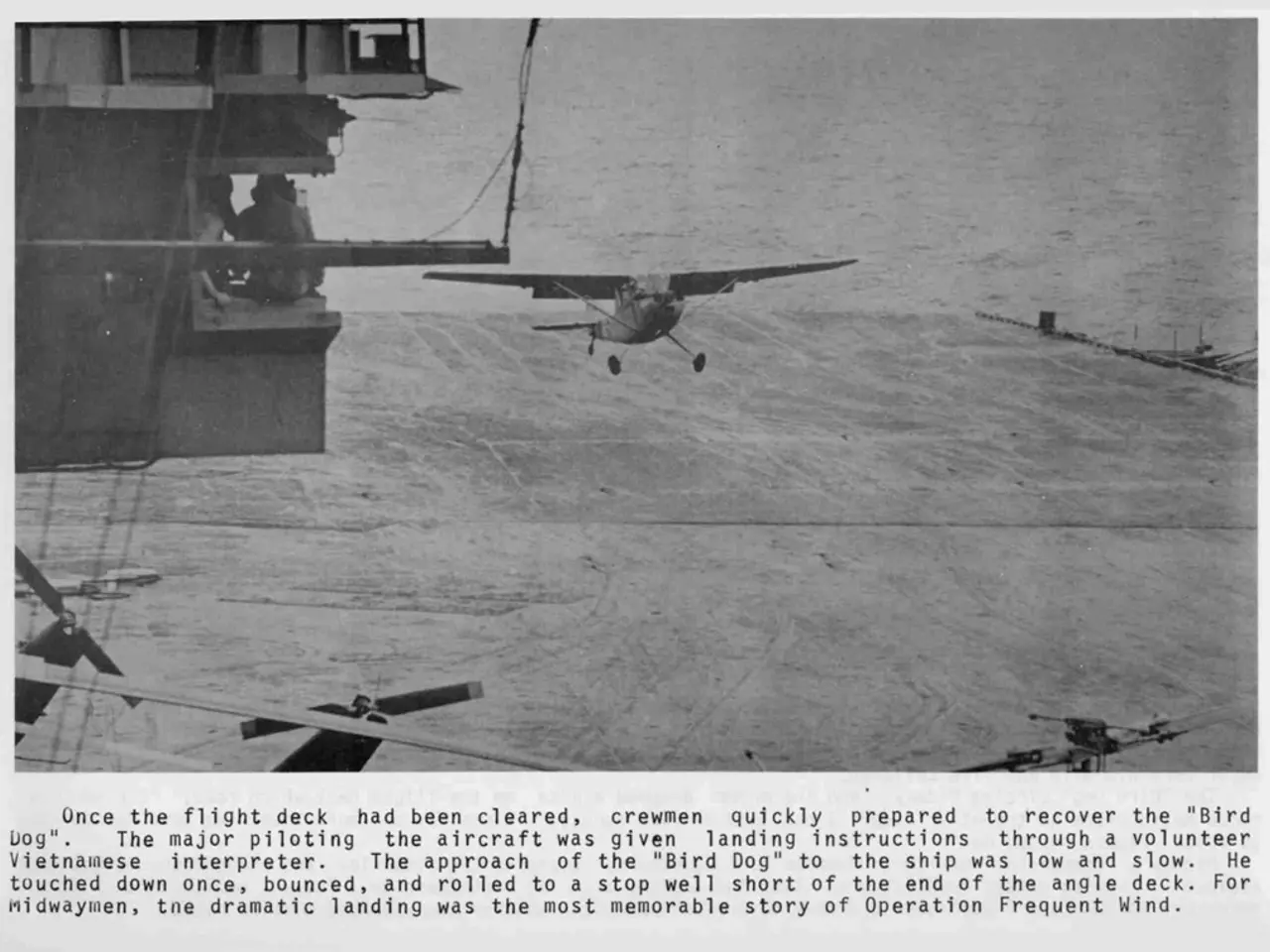First Helicopter Flight Powered by Eco-Friendly Aviation Fuel in China
In a significant stride towards sustainable aviation, China recently conducted the country's first helicopter flight using Sustainable Aviation Fuel (SAF) at Hefei Shiwan Airport. This landmark event marks a crucial step in China's broader push towards green and sustainable aviation technologies.
The flight, powered by an Airbus H125 helicopter equipped with a Safran ARRIEL 2D engine, utilised a hybrid ratio of 40% SAF provided by China National Aviation Fuel (CNAF). This move aligns with ongoing national initiatives to promote sustainable aviation, including electric and hydrogen propulsion systems, as well as SAF.
The use of SAF allows aircraft to minimise their carbon footprint while maintaining the same flight performance. SAF is an alternative aviation fuel made from various feedstocks, including waste materials. It can result in up to 80% reduction in CO2 across its lifecycle compared to fossil jet fuel.
This historic flight signifies a significant milestone for China's aviation sector in reducing carbon emissions and advancing green energy use in rotorcraft operations. Colin James, Managing Director of Airbus Helicopters in China, expressed pride in the SGST's SAF flight, making Airbus Helicopters the first helicopter manufacturer to perform a SAF flight in China.
The cooperation agreement between Airbus and CNAF aims to optimise the SAF supply chain, diversify sources, and enhance production towards using 10% SAF by 2030. This agreement is part of Airbus Helicopters' methods to contribute to Airline Travel Action Group's (ATAG) NetZero outlook by 2050.
Airbus Helicopters and its partners are working to reduce carbon emissions and set a standard within the industry by using locally-produced SAF. The flight is significant for stimulating SAF promotion and its application in China. Marc Delort, General Manager of Safran Helicopter Engines China, expressed a willingness to play an active role in China by providing propulsion solutions and making further contributions to promote green aviation.
Du Guihe, Board Chairman of SGST, stated that the flight has a positive impact on enterprises proactive on low-carbon general aviation development. This first SAF helicopter flight in China demonstrates SAF’s feasibility in rotary-wing aviation, which historically has been challenging due to fuel and range requirements.
The implications of this flight are far-reaching. It supports China’s commitment to reduce CO2 emissions in aviation in line with global climate goals. It paves the way for broader commercial adoption of SAF in both urban air mobility and traditional helicopter operations. Furthermore, it synergizes with electric and hydrogen propulsion research to create a multi-pronged sustainable aviation strategy.
China is simultaneously expanding green energy infrastructure, including the world's largest green hydrogen and ammonia plant which supports zero-carbon fuels for aviation and other sectors. This infrastructure expansion is critical to making SAF a viable and scalable alternative for helicopters and fixed-wing aircraft alike.
For more information about SAF, please visit our website, SGCCofficial, and SafranHCEngines.
[1] EHang's EH216-S certified for limited commercial use [2] Liaoning General Aviation Academy's RX4E progressing towards larger scale operations [3] China's aviation sector aims for ICAO decarbonization goals using SAF and other green propulsion technologies [4] World's largest green hydrogen and ammonia plant supports zero-carbon fuels for aviation and other sectors [5] China's first helicopter flight using Sustainable Aviation Fuel (SAF) in China
- The advancements in China's aviation sector extend beyond the first helicopter flight using Sustainable Aviation Fuel (SAF), as EHang's EH216-S has recently been certified for limited commercial use, signifying progress in electrical aviation, another key component of China's green and sustainable aviation technologies.
- The synergy between science, technology, and finance is evident in China's aviation industry, as evidenced by the cooperation agreement between Airbus and China National Aviation Fuel (CNAF), aiming to optimize the SAF supply chain and contribute to Airline Travel Action Group's (ATAG) NetZero outlook by 2050, also leveraging research in environmental-science to create a multi-pronged sustainable aviation strategy.




